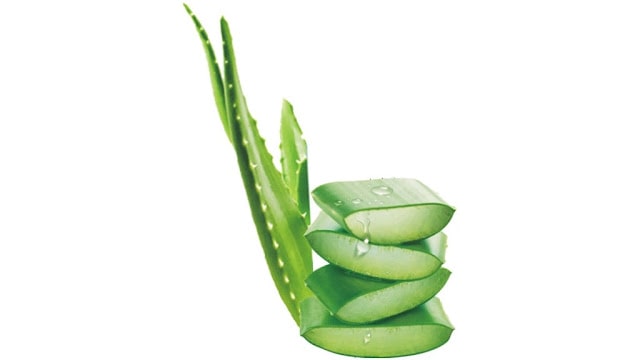"Uterine Fibroids Treatment" How to get rid of uterine fibroids naturally without surgery. A fibroid is a benign tumor of muscular and fibrous tissues that develops in the wall of the womb on or with the uterus.
Uterine fibroids, also known as myoma, and fibroma leiomyoma are non-cancerous and can grow to the size of a grapefruit. Fibroid tumors are common among obese women aged between 30-50 years. Herbs are one of the popular methods for natural fibroid treatment.
Surgeries like hysterectomies do not cure fibroids it only seeks to treat the symptoms. Hysterectomy is an extraordinary medical procedure in manners you may not appreciate. It should just be picked if all else fails after debilitating all alternatives.
Characteristic strategies for fibroids treatment are the best way to dispose of fibroids at all times. There are mosaicked herbs for shrinking fibroids that fast. Here are 3 natural treatments for uterine fibroids.
What are uterine fibroids?
Uterine fibroids, also known as leiomyomas or myomas, are noncancerous growths of the uterus that often appear in the childbearing years. They are formed from muscle cells and other tissues that grow in and around the wall of the uterus. Fibroids vary in size, from small growths that are not visible to the naked eye to large ones that can distort the shape and size of the uterus.
The exact cause of uterine fibroids is not well understood, but several factors may contribute to their development, including hormonal influences (estrogen and progesterone), genetic predisposition, and growth factors. Factors such as age, family history, race, and hormonal changes can also play a role in their development.
Symptoms of Uterine Fibroids
Although many women with uterine fibroids may experience no symptoms, others may have symptoms such as:
- Heavy menstrual bleeding
- Prolonged menstrual cycle
- Pelvic pain or pressure
- Frequent urination or difficulty emptying the bladder
- Back pain or leg pain
- Pain during intercourse
- Enlarged abdomen or uterus
Treatment Options For Uterine Fibroids
Treatment options for uterine fibroids depend on the severity of symptoms, the size and location of the fibroids, and the patient's age and future fertility desires. Treatment can range from watchful waiting for asymptomatic cases to medications and surgical procedures, including hysterectomy (removal of the uterus) or myomectomy (removal of fibroids while preserving the uterus). Hormonal therapy and minimally invasive procedures may also be considered in some cases.
It is important for women experiencing symptoms of uterine fibroids to consult with their healthcare provider for an accurate diagnosis and to discuss appropriate treatment options based on their circumstances.
What Causes Fibroid Tumors?
The exact cause of fibroid tumors, also known as uterine fibroids or leiomyomas, is not fully understood. However, several factors and risk factors have been identified that may contribute to their development. These factors include:
Symptoms of Fibroid Tumors
- Genetics: There seems to be a genetic predisposition to the development of fibroids. You may be at higher risk if your mother or sister has fibroids.
- Hormones: Estrogen and progesterone, two hormones that stimulate the growth of the lining of the uterus during each menstrual cycle in preparation for pregnancy, seem to promote the growth of fibroids. Fibroids shrink after menopause when hormone levels drop.
- Race and ethnicity: Fibroids are more common in women of African descent. They also develop at a younger age and may be more severe in this population.
- Age: Fibroids are most commonly diagnosed in women between the ages of 30 and 40, although they can occur at any age.
- Obesity: Women who are overweight or obese may have a higher risk of developing fibroids.
- Diet: Some studies suggest that a high intake of red meat and a low intake of fruits and vegetables may be associated with an increased risk of fibroids.
- Early onset of menarche: Women who start menarche at a younger age may be at higher risk.
- Never given birth: Women who have never given birth may be at higher risk.
It is important to note that although these factors are associated with an increased risk, the presence of one or more of these factors does not guarantee the development of fibroids. The exact interaction of these factors in the development of fibroids is complex and varies among individuals. If you suspect you have fibroids or are experiencing symptoms such as heavy menstrual bleeding, pelvic pain, or frequent urination, it is recommended to consult a healthcare professional for proper diagnosis and management.
Uterine Fibroids Treatment
1. Aloe Vera
Aloe vera is a standout amongst the most valuable herbs for quickly contracting fibroids and treating a few other medical issues. To make this remedy, you need a quartz glass of water. 1/4 cup of aloe vera juice. One cup of beet juice. Two tablespoons of blackstrap molasses.
Mix 1/4 cup of aloe vera juice with one cup of beet juice in a glass. Add some lemon juice and 1 to 2 tablespoons of unsalted blackstrap molasses. Pour enough water to fill a glass. This mixture helps to shrink fibroids.
2. Chamomile
Chamomile is the most used remedy for several health disorders. The anti-inflammatory and antiseptic properties of chamomile help cure fibroid cysts naturally. To make this remedy, you need one cup of hot water. Two to three teaspoons of chamomile flowers. Few drops of lemon juice. Add two to three teaspoons of chamomile flowers to a cup of hot water. Let it arouse for three minutes. Strain it and add a few drops of lemon juice to taste.
3. Dandelion Roots
The dandelion herb supports the detoxification of the blood and helps to maintain hormonal balance. It reduces estrogen levels, which are the root cause of the development of fibroids in the uterus. Dandelion leaf nourishes the body because it's rich in vitamins and minerals. To make this remedy, you need 1.5 cups of water. Three tablespoons of dandelion root.
Prepare the tea by putting 1 ½ cups of water on a simmer. Add three tablespoons of dandelion roots to it. Let it simmer for 15 minutes. After heating, let it rest for 15 minutes. Strain and drink three cups daily. Or else, you can also have 2 capsules or 1-2 tablespoons of liquid extract of dandelion roots thrice a day.
Conclusion:
Treatment for uterine fibroids includes a range of options depending on the individual's symptoms, overall health, and preferences. From watchful waiting and medications to noninvasive and minimally invasive procedures, healthcare providers strive to meet the specific needs of each patient. The decision-making process may include fertility preservation, symptom relief, and overall consideration.
It is important for individuals experiencing uterine fibroids to consult with their healthcare professional to determine the most appropriate treatment plan for their unique circumstances. With a holistic approach that may include lifestyle changes, medications, or surgical intervention, women can work with their healthcare teams to find effective solutions that improve their quality of life. Be able to make and deal with the challenges of uterine fibroids.




.png)
















